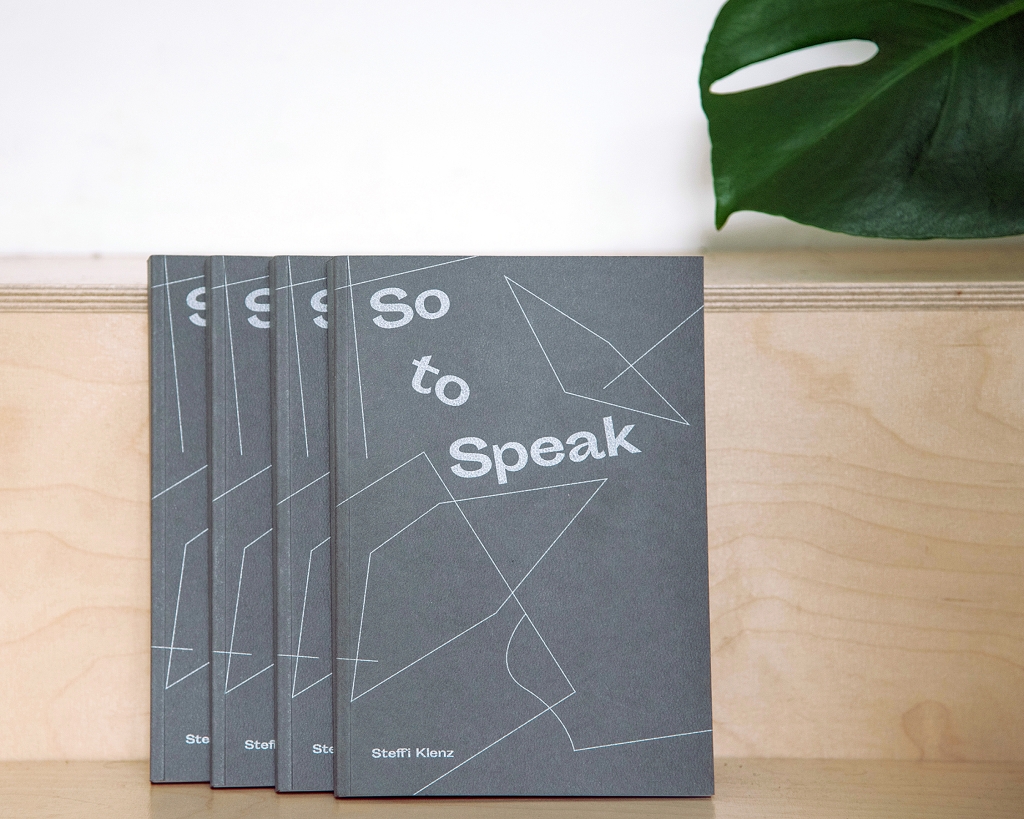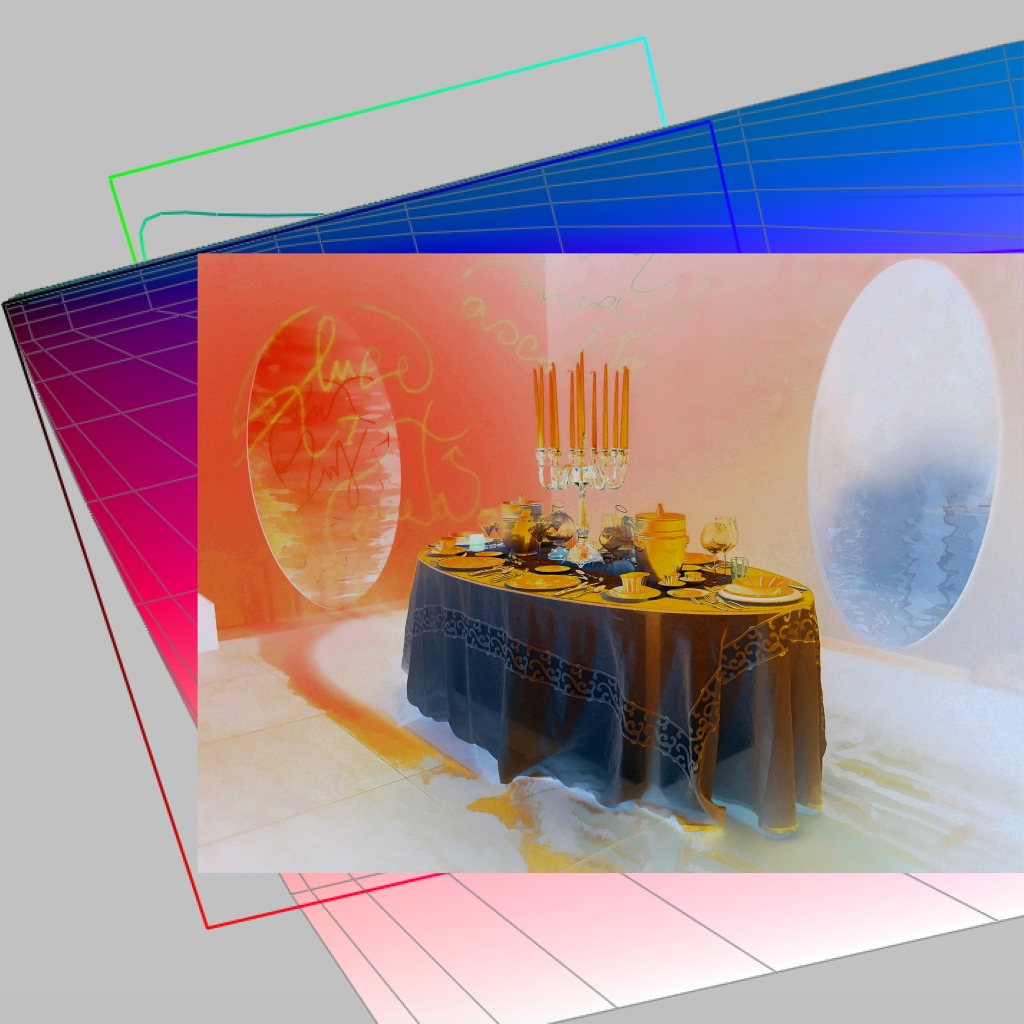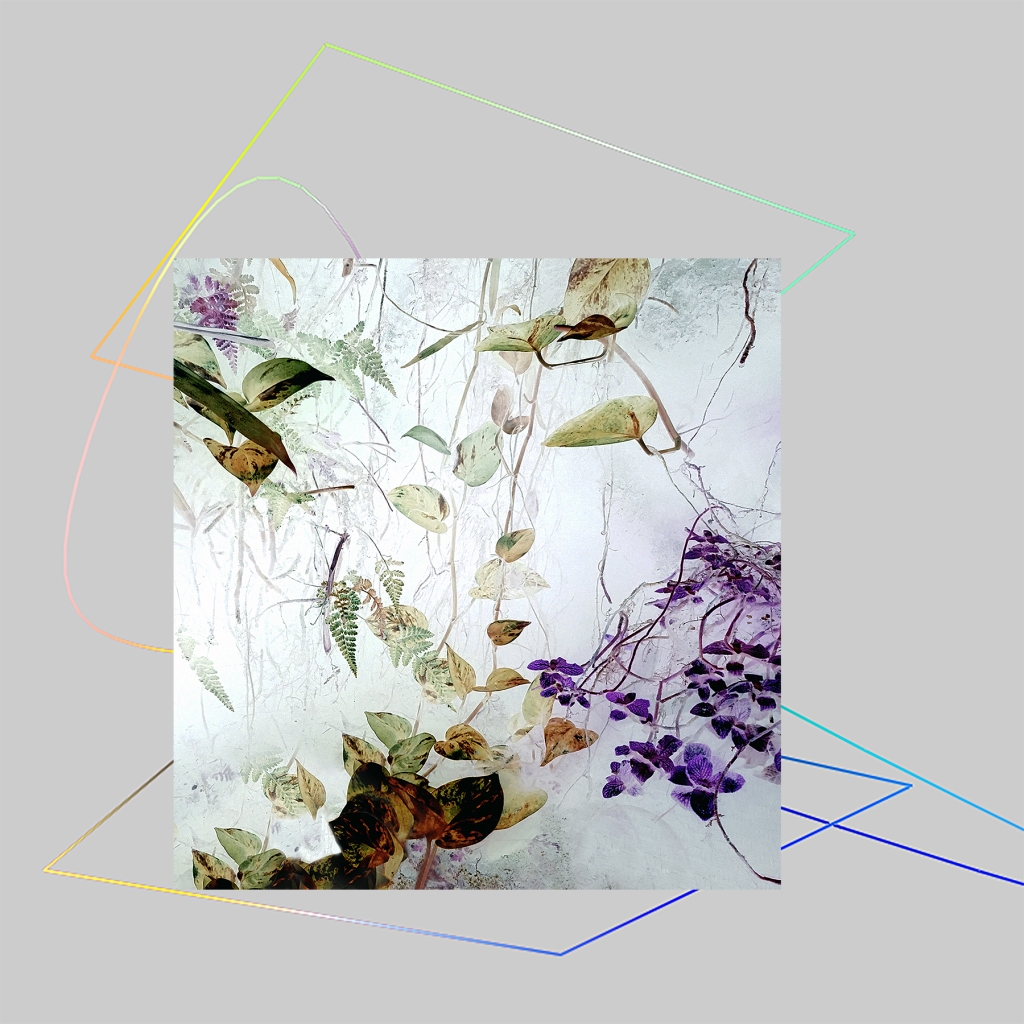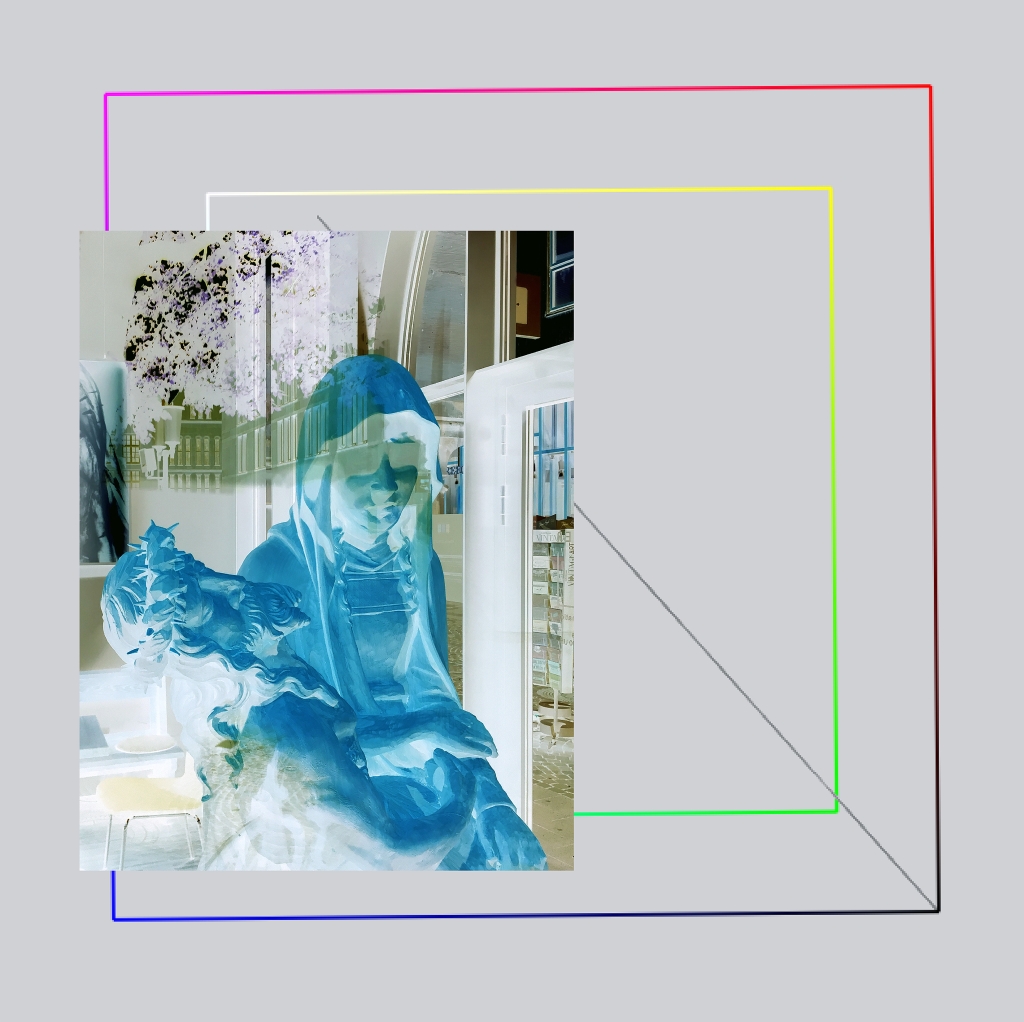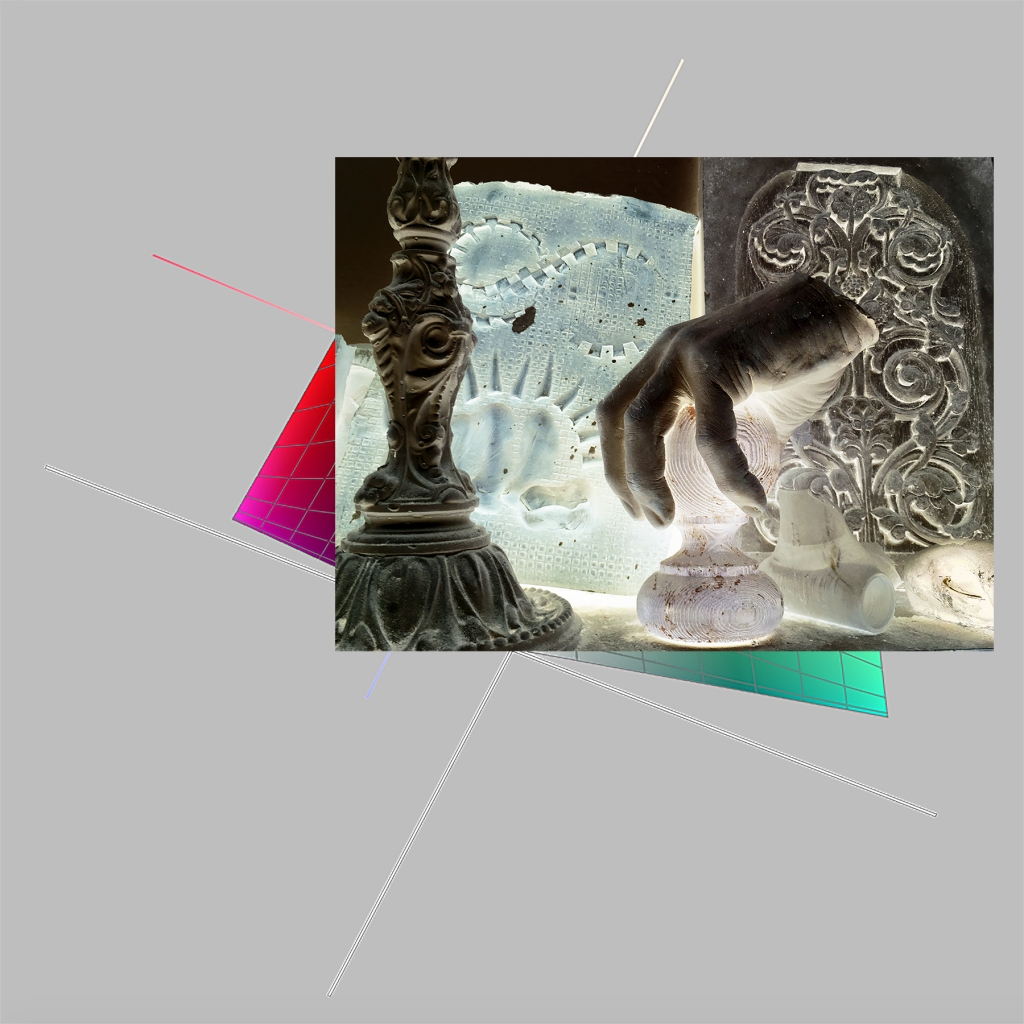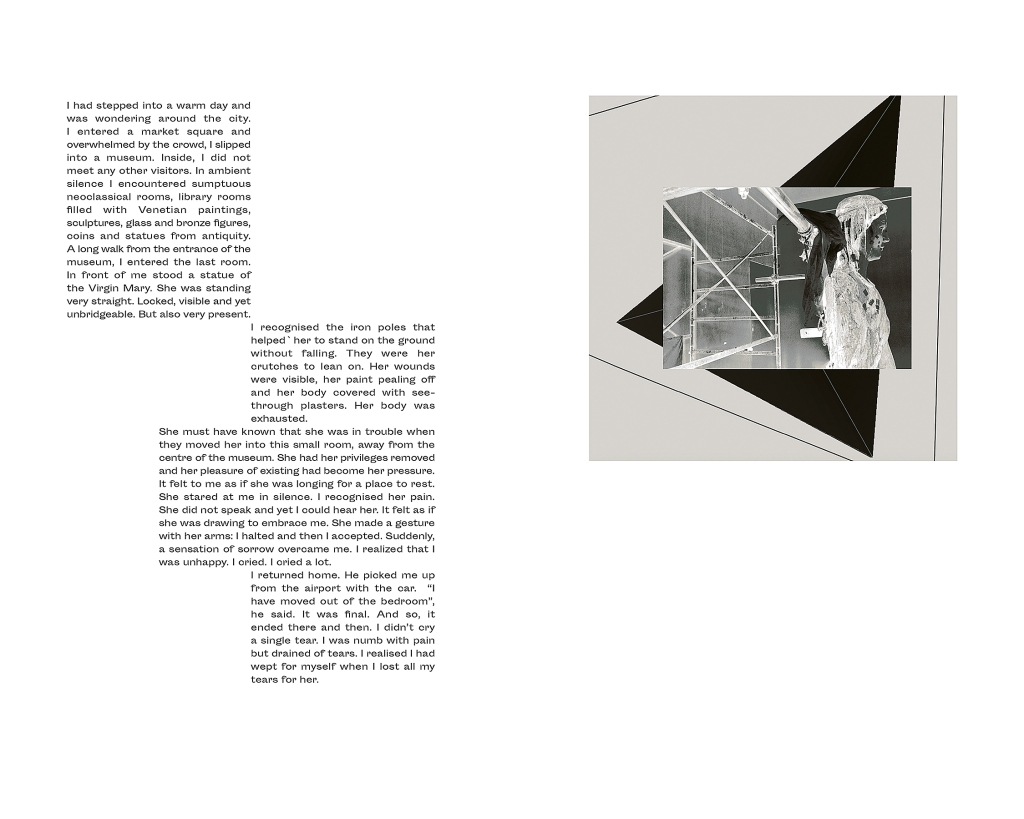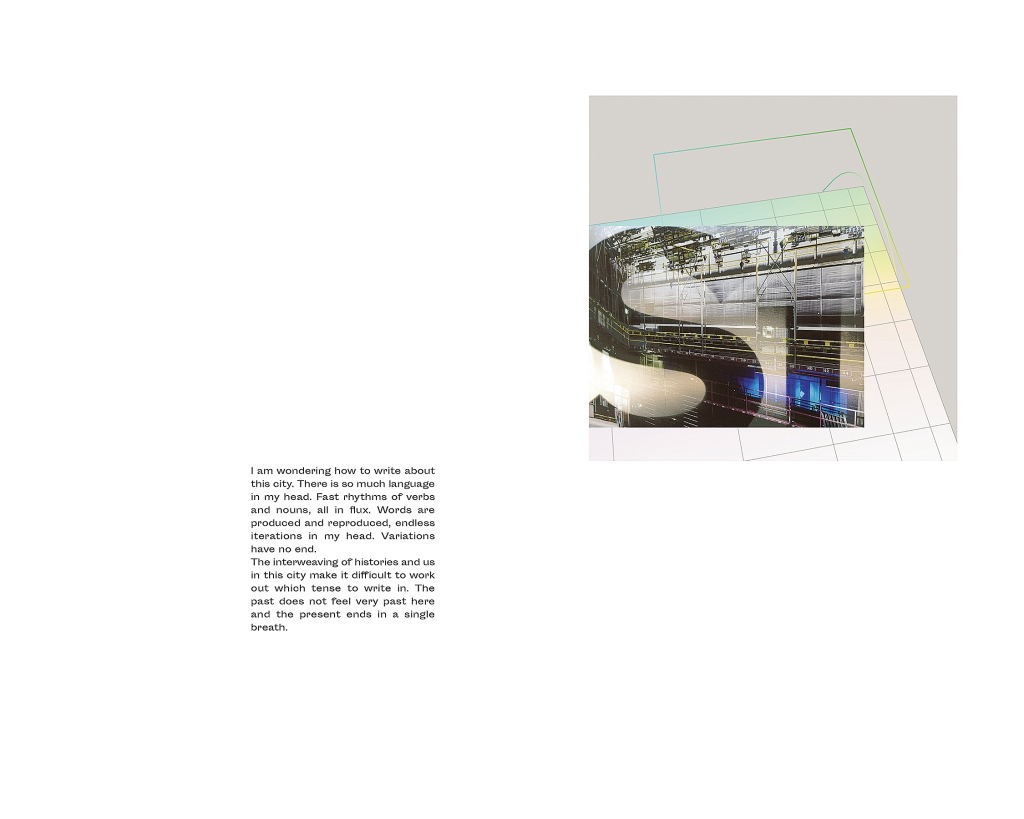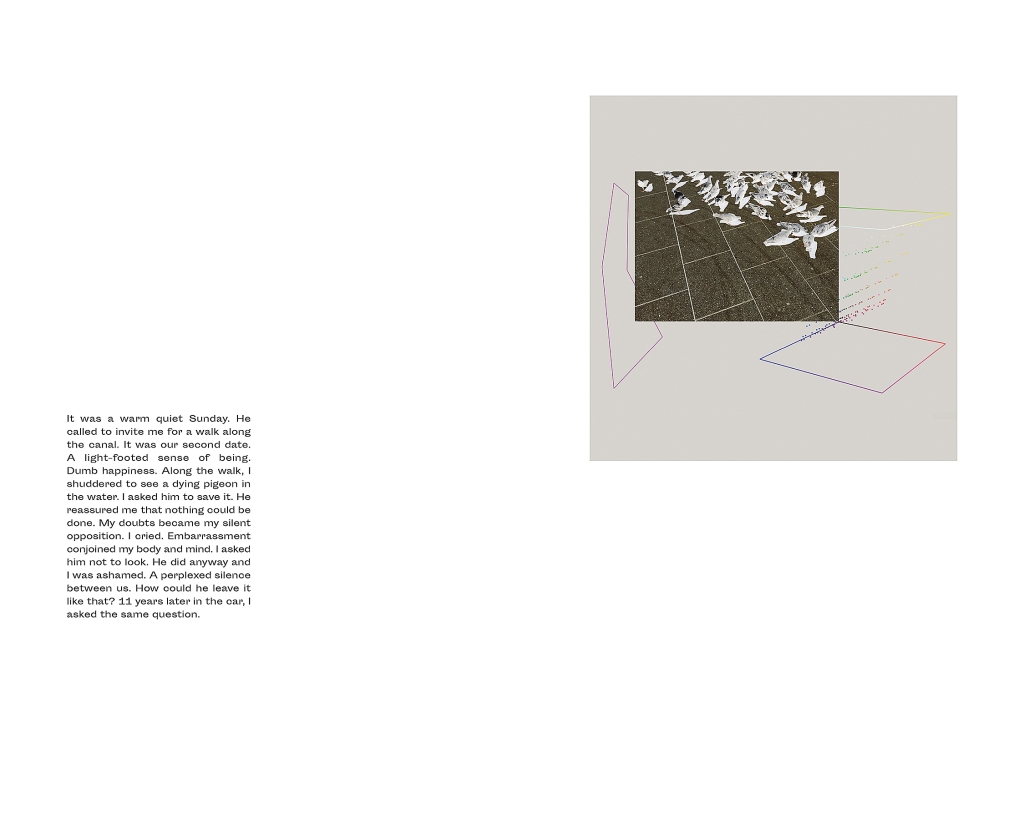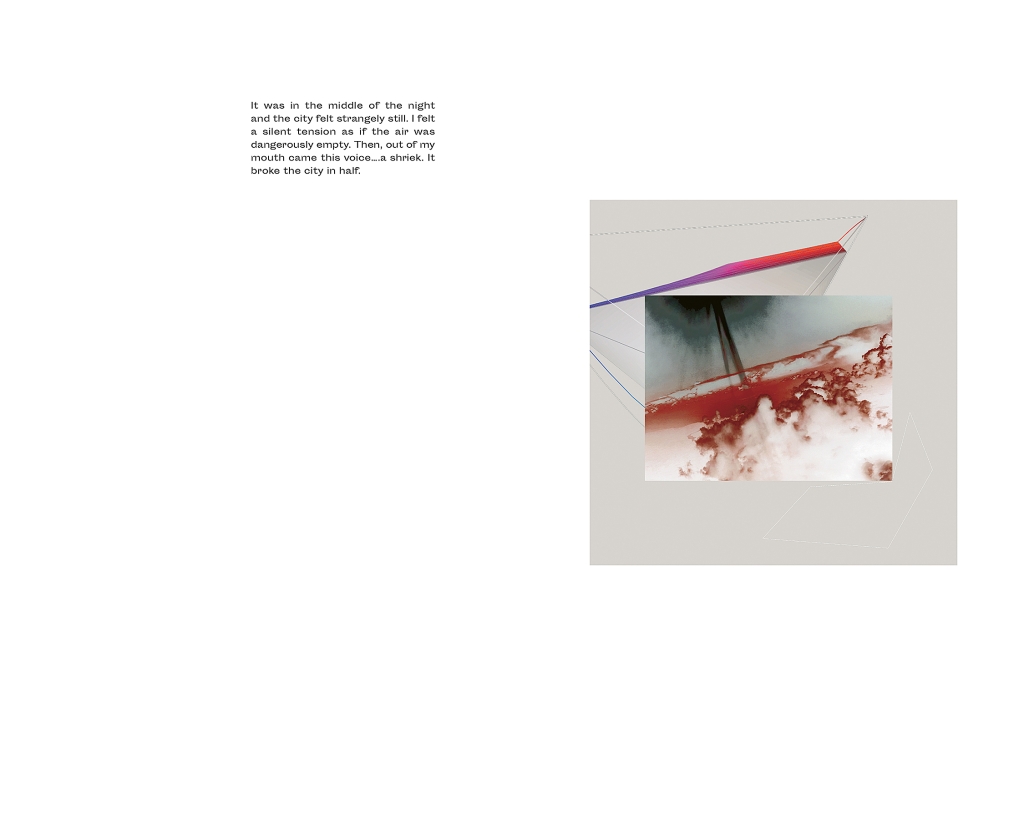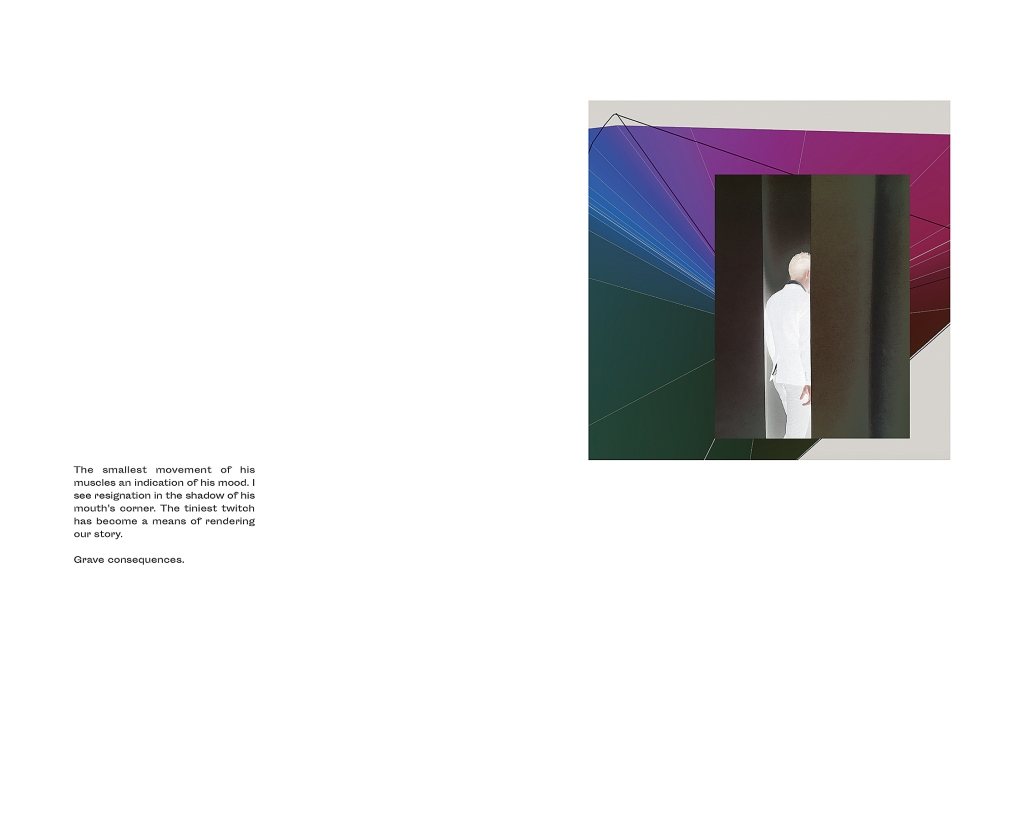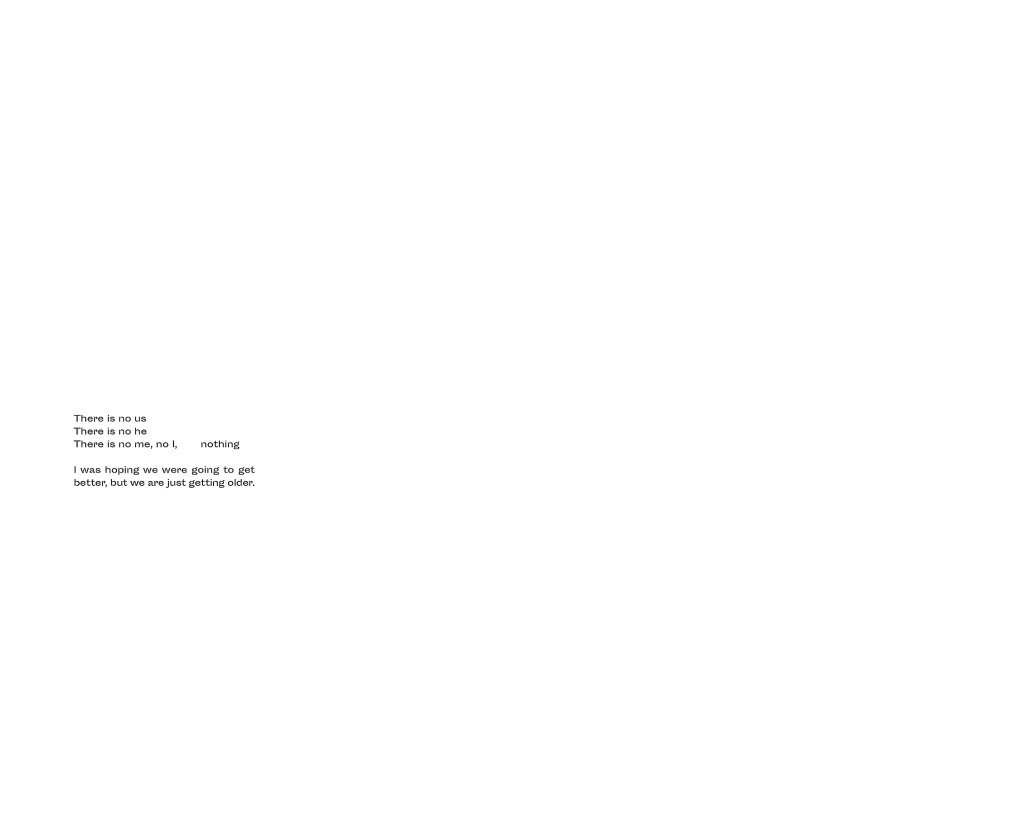So to Speak
The book So To Speak presents imagery that use digital photographic technologies such iPhones and consumer-grade Epson printers and its printer profiles – as tools to create imagery that generates fresh and critical perspectives of the photographic medium as a medium that communicates across and through technology and technological language systems such as codes and printer profiles.
The book tells the story of a couple’s separation through photographic imagery and fragmented reflective text pieces highlighting the couple’s inability to communicate effectively with each other.
The writing and photographs are the product of the period of one year of grief Klenz experienced after the moment her long-term relationship ended and while still living in the same house as her former partner. Klenz used her daily walks as a quotidian ritual to enter into a dialogue with the spaces she encountered: buildings, objects and places acted as triggers for her memory. The buildings and architectural scenes provided a means to harness her internal thinking, allowing her to be with and in architecture, meeting herself at the same time.
The book installs the textual reflections and imagery together and aims to question the role of communication in photography, focusing on dichotomies of image and text. Klenz is interested to explore these two language systems — visual and verbal- in her book, highlighting the inherent limitations of both photography and words as “descriptive systems” to communicate effectively in their singular form. So To Speak explores the translations that occur between systems of communication and dissemination of information: between a couple and between the photographic and the textual.
Published by MÖREL Books
London, 2018
Edition of 200
Pages 208
83 images
Metallic + 4 colour print throughout on satin coated paper
15.5x22.5 cm
Book review by Lisa Stein for Photomonitor
By definition the phrase ‘so to speak’ helps to mask a linguistic defect. Commonly used to indicate when an expression is not to be taken literally, it emphasises the use of a word or sentence whereby the intended meaning is not described correctly or sufficiently. Moreover, the phrase is often used incorrectly, concealing an inability to express oneself. Language and where it unravels is the subject of So to Speak, a new book by Steffi Klenz that tells the story of the artist’s separation from her long-term partner with whom she continued to live for one year after the relationship ended.
So to Speak juxtaposes texts written by Klenz with photographic negatives that have been superimposed onto computer-generated images. Although the design of the book encourages the reader to make connections between the artist’s writing, which ranges from the descriptive and narrative to the poetic, and her collaged imagery, it is not immediately apparent how they might relate to each other. There is a disconnect between the Klenz’s ‘textual reflections’—often highly personal entries in which she recalls a conversation with her former partner or grapples with emotions such as sadness, confusion and in rare instances, happiness—and the subject matter and style of the photographs as well as the abstract pictures underlying them.
Klenz’s predominantly dark images of urban landscapes, interiors and classical sculpture are rendered bleaker still by a metallic sheen applied in areas of the negative in which the film has been underexposed. By superimposing her photographs onto images composed of lines, dots, grids and gradients in various, often bright colours, Klenz creates an atmosphere reminiscent of a prevailing science fiction subgenre that explores the transformative effects of advanced technology: cyberpunk describes the increasingly intimate relationship between human subjectivity, artificial intelligence and computer hardware, and its post-industrial dystopian settings—dark, urban landscapes flooded with neon light emanating from countless digital signs—evoke a sense of alienation in the viewer even today.
Similarly, Klenz’s photographs of urban textures and organic matter possess an alien quality that is emphasised by the illegible images underneath. Although we know that they contain information we can neither recognise, nor decipher it. This sense of helplessness is mirrored in passages of the artist’s writing that register the gradual breakdown in communication between herself and her partner. Drawing on the fragmentary nature of the photographic image, Klenz emphasises the inadequacy of verbal communication, which necessarily abstracts reality and, in this case, fails to express the artist’s overwhelming sense of loss. The artist often describes the difficulty of understanding her partner, whose words, whispers, micro expressions and silences make up the ‘realm of things that can’t be grasped, him’.
The experience of feeling isolated—at one point, Klenz describes how ‘he has cast me deeper into my own head’—informs her daily encounters with places, buildings and objects, and at times it is the artist herself who struggles to communicate; wandering through the city she tries to make sense of ‘fast rhythms of verbs and nouns, all in flux. Words are produced and reproduced [. . .] Variations have no end’. Particularly Klenz’s abstract poetry, texts that mirror her photographs insofar as they ‘show’ rather than ‘tell’, serves to undermine the authority of both image and text in their ability to describe a subjective reality.
But precisely herein lies the success of So to Speak, which, despite its fragmentary nature, successfully communicates a universal experience, namely, the loss of a loved one and the inevitable loss of meaning associated with that event. Paging through the book we realise that a photograph or piece of writing could never express how a familiar place that is filled with shared memories changes when we suddenly find ourselves alone; how a street we are standing in today feels now that we are no longer with the one we love; how we might ‘see’ these places differently; and how this relates to our sense of ‘belonging’.
Indeed, in becoming estranged from her partner Klenz becomes increasingly estranged from her former existence, at one point asking herself ‘where does the city begin? Where do I begin?’. It is in her close observations of the places and objects she encounters on her daily walks that Klenz finds new meaning, ‘however frail and scarcely recoverable’, and while her photographs of buildings and interiors can be understood as a deliberate erasure of meaning, they nevertheless play a role in its construction, mapping the artist’s path of rediscovering her city, and herself.
